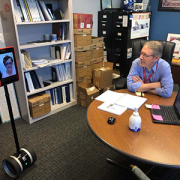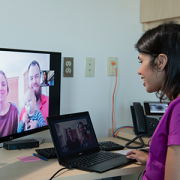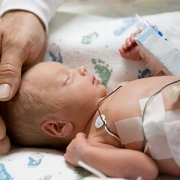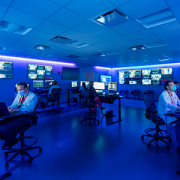Neuropsychology pilots robotic telepresence technology for telehealth
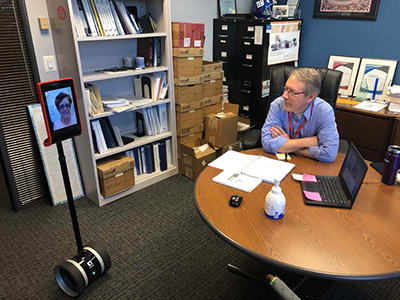
Karin S. Walsh, Psy.D., and Gerard Gioia, Ph.D., in the Division of Neuropsychology pilot robotic telepresence technology to improve video visits.
The telehealth program at Children’s National Hospital continues to expand access to remote specialty care for families, as well as increase consultation and liaison services to hospitals and clinicians who lack specialty care services on site. The Children’s National Division of Neuropsychology has been a leader in adopting multiple telehealth services including direct-to-consumer video visits, psychotherapy video visits, provider consultations and provider training and supervision.
Telehealth as a whole has been shown to increase access to care, with video visits in particular showing greater clinical and educational impact compared to telephone communications. Despite this, one key limitation has been the immobility of technology used to capture video visits.
To solve for immobility, Karin S. Walsh, Psy.D., is leading a pilot study testing the feasibility and acceptability of telepresence robotics in the division. Robot telepresence devices provide a unique approach to video visits, allowing for extended physical mobility and presence, while expanding interactions between providers and patients, supervisors and trainees and in educational interactions. Traditional video visits demonstrate good feasibility and acceptability by patients, families and staff. This new approach aims to increase the “presence” of the provider and further improve clinical impact, educational impact and patient satisfaction.
The division will initially incorporate two robots into clinical care beginning in May 2020. The pilot study is expected to be carried out over the next 12-18 months, which is particularly timely given the COVID-19 pandemic. The robots, from Double Robotics, offer a high-tech, secure, integrated platform in a device that is user friendly and effective for moving freely through the clinical environment.
“With the addition of the telepresence robots, we anticipate an increase in the quality of care and access for patients and families to neuropsychological specialty care,” says Dr. Walsh. “In addition, given the geographic separation of the program – faculty and trainees are spread across six different locations – the versatile technology will increase the division’s ability to include clinicians with particular expertise into clinical sessions and consultations, as well as in training programs.”
After the pilot study, the team will assess the acceptability of robotic telepresence technology and the special qualities that this modality may offer to enhance quality of care within neuropsychology and within collaborating medical teams.


